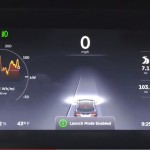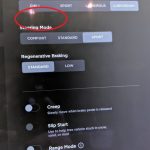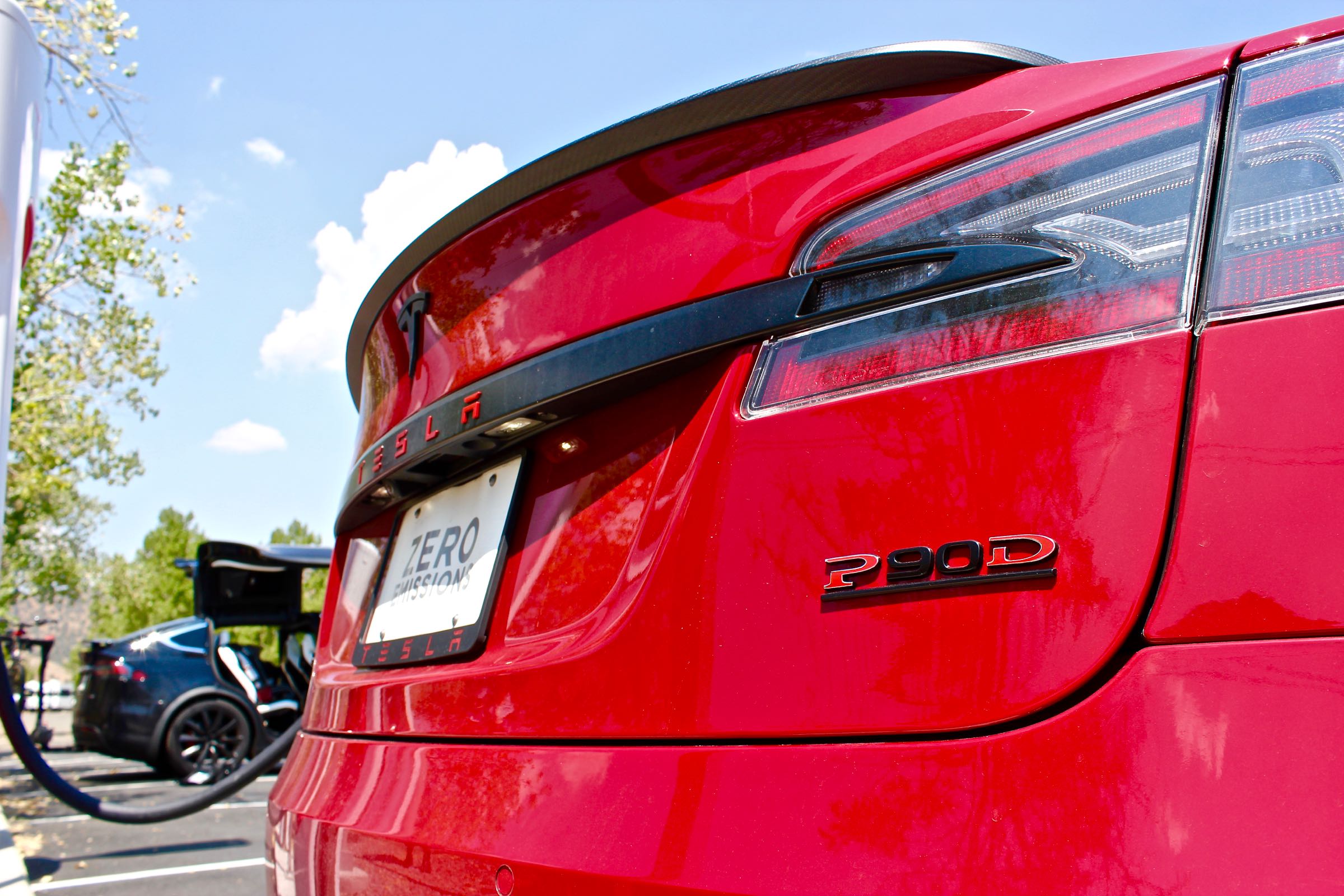
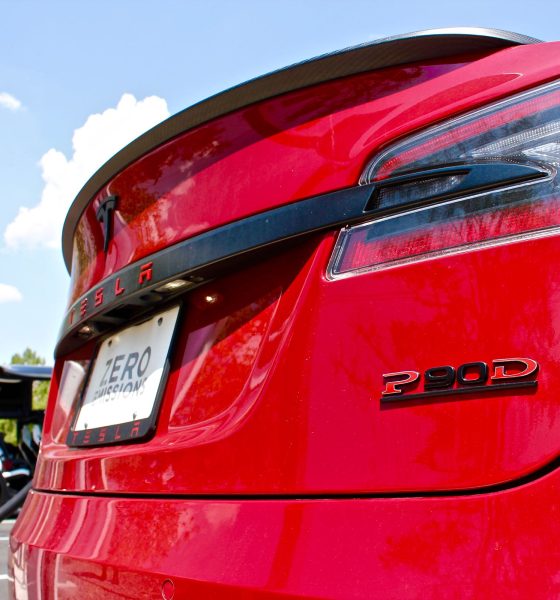
Firmware
Tesla Model S owners report performance drop as ‘Launch Mode’ disappears after firmware update
Some of Tesla’s recent firmware updates appear to have adversely affected a number of Model S variants, with electric car owners reporting that their vehicles lost features like Launch Mode and Max Battery Power after installing firmware 2019.x. This has resulted in slower-than-usual launches, particularly among Model S P85D and P90D vehicles.
Conversations about the issue started at the Tesla Motors Club back in early April, with Model S P90DL owner Ryan Autry mentioning that his electric car lost Max Battery Power and Launch Mode after it received the 2019.x update in mid-March. The Tesla owner noted that while his vehicle showed the Ludicrous + button under Acceleration, selecting the setting did not trigger a sub-screen that allowed Max Battery to be chosen. Tesla Model S P100D owners in the TMC forums noted that their vehicles did not any problems with the same firmware version installed.
Eventually, more owners of Model S P90D and P85D reported the loss of their vehicles’ Launch Mode and Max Battery Power options. Reports also emerged stating that the electric sedans showed less power after installing the 2019.x update. One owner, who goes by the username Kurfer on TMC, tested his Model S in the quarter mile and found that his car’s time had increased from 11.12 to 11.75 seconds with 2019.x installed.
- (Credit: Ryan Autry/Tesla Motors Club)
Prompted by the issues resulting from the 2019.x firmware updates, the Model S owners began taking their vehicles to Tesla service centers to have them fixed. The owners were informed that the source of the issues was a bug, and that a software update will be released to fix the problems. Several software updates were indeed rolled out, but none addressed the missing features and the reduction in power. As of Monday, Model S owners on the TMC forum have reported getting firmware version 2019.12.1.2 for their vehicles, but just like before, Launch Mode and Max Battery Power were still unavailable.
These circumstances have resulted in a notable degree of apprehension among several Tesla owners, with some speculating that the company might be intentionally limiting the power of the Model S P95D and P90D. Some owners who have been frustrated at the lack of legitimate solutions from the company are even contemplating a class-action lawsuit. While this might sound a bit excessive, it should be noted that something very similar had happened before.
Back in 2016, several Model S owners started noticing that their vehicles were performing less impressively than usual. Upon soliciting feedback from a local service center, Model S owner and TMC member Tech_Guy was informed that software on his Ludicrous Model S has limited his vehicle’s power output due to too many uses of Launch Mode. This resulted in complaints from electric car owners, and eventually Tesla opted to remove the limiting feature. Tesla’s then-President of Global Sales and Service Jon McNeill announced that the company decided to “remove all software performance reductions tied to frequent max power usage.”
Tesla’s electric cars are known for their insane launches and their quick acceleration. The Model S, particularly its P-branded variants, changed the way electric cars are perceived by regularly outrunning high-performance vehicles and supercars on the quarter-mile. Tesla’s software updates are designed to improve the company’s vehicles; thus, an update making Performance cars slower does not make a lot of sense. Speed and power, after all, are among the key reasons why customers purchased the Model S P90D and P85D, and it is only fair for Tesla to ensure that vehicles sold as Performance machines retain their impressive characteristics until the end of their life cycle.
Update:
A Tesla spokesperson has stated that the settings for Max Battery Power and Launch Mode were inadvertently removed from some Model S vehicles after a UI update. The electric car maker is currently working on a fix for the issue, and has noted that the updates were not intended to restrict the performance of the affected Model S vehicles. Tesla extends its apologies to electric car owners for the inconvenience resulting from this issue.

Firmware
Tesla mobile app shows signs of upcoming FSD subscriptions
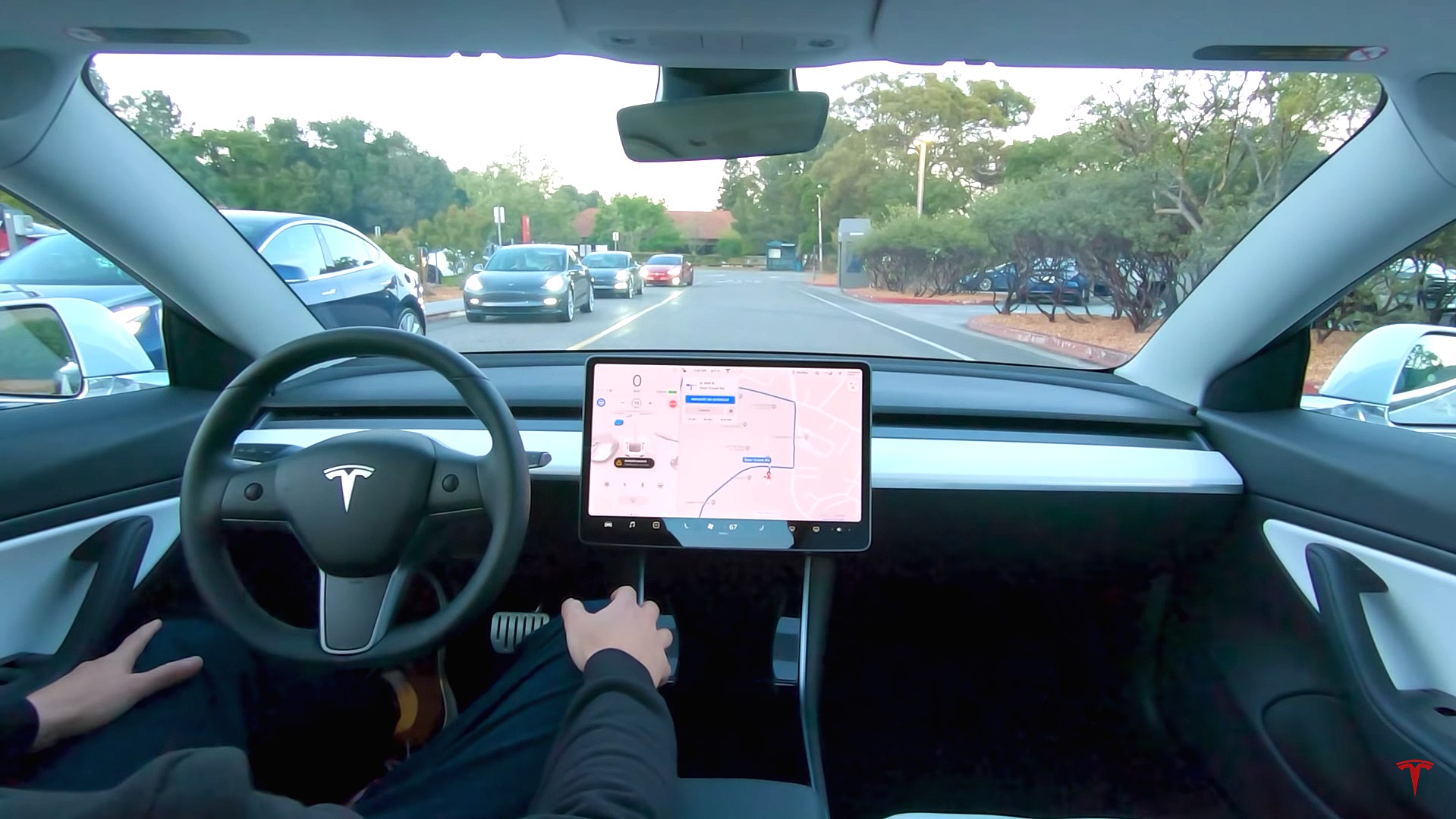
It appears that Tesla may be preparing to roll out some subscription-based services soon. Based on the observations of a Wales-based Model 3 owner who performed some reverse-engineering on the Tesla mobile app, it seems that the electric car maker has added a new “Subscribe” option beside the “Buy” option within the “Upgrades” tab, at least behind the scenes.
A screenshot of the new option was posted in the r/TeslaMotors subreddit, and while the Tesla owner in question, u/Callump01, admitted that the screenshot looks like something that could be easily fabricated, he did submit proof of his reverse-engineering to the community’s moderators. The moderators of the r/TeslaMotors subreddit confirmed the legitimacy of the Model 3 owner’s work, further suggesting that subscription options may indeed be coming to Tesla owners soon.
Did some reverse engineering on the app and Tesla looks to be preparing for subscriptions? from r/teslamotors
Tesla’s Full Self-Driving suite has been heavily speculated to be offered as a subscription option, similar to the company’s Premium Connectivity feature. And back in April, noted Tesla hacker @greentheonly stated that the company’s vehicles already had the source codes for a pay-as-you-go subscription model. The Tesla hacker suggested then that Tesla would likely release such a feature by the end of the year — something that Elon Musk also suggested in the first-quarter earnings call. “I think we will offer Full Self-Driving as a subscription service, but it will be probably towards the end of this year,” Musk stated.
While the signs for an upcoming FSD subscription option seem to be getting more and more prominent as the year approaches its final quarter, the details for such a feature are still quite slim. Pricing for FSD subscriptions, for example, have not been teased by Elon Musk yet, though he has stated on Twitter that purchasing the suite upfront would be more worth it in the long term. References to the feature in the vehicles’ source code, and now in the Tesla mobile app, also listed no references to pricing.
The idea of FSD subscriptions could prove quite popular among electric car owners, especially since it would allow budget-conscious customers to make the most out of the company’s driver-assist and self-driving systems without committing to the features’ full price. The current price of the Full Self-Driving suite is no joke, after all, being listed at $8,000 on top of a vehicle’s cost. By offering subscriptions to features like Navigate on Autopilot with automatic lane changes, owners could gain access to advanced functions only as they are needed.
Elon Musk, for his part, has explained that ultimately, he still believes that purchasing the Full Self-Driving suite outright provides the most value to customers, as it is an investment that would pay off in the future. “I should say, it will still make sense to buy FSD as an option as in our view, buying FSD is an investment in the future. And we are confident that it is an investment that will pay off to the consumer – to the benefit of the consumer.” Musk said.
Firmware
Tesla rolls out speed limit sign recognition and green traffic light alert in new update
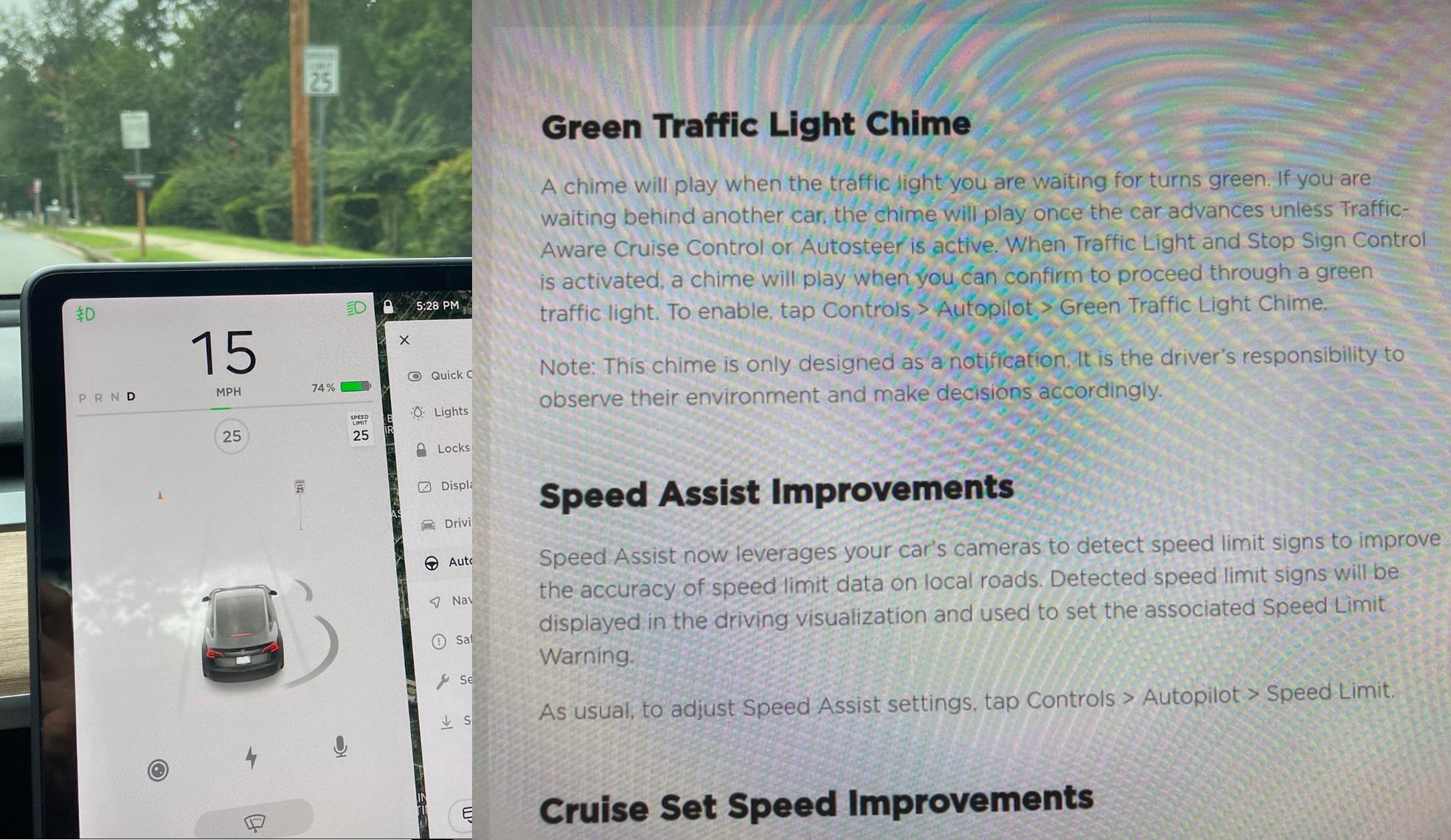
Tesla has started rolling out update 2020.36 this weekend, introducing a couple of notable new features for its vehicles. While there are only a few handful of vehicles that have reportedly received the update so far, 2020.36 makes it evident that the electric car maker has made some strides in its efforts to refine its driver-assist systems for inner-city driving.
Tesla is currently hard at work developing key features for its Full Self-Driving suite, which should allow vehicles to navigate through inner-city streets without driver input. Tesla’s FSD suite is still a work in progress, though the company has released the initial iterations of key features such Traffic Light and Stop Sign Control, which was introduced last April. Similar to the first release of Navigate on Autopilot, however, the capabilities of Traffic Light and Stop Sign Control were pretty basic during their initial rollout.
2020.36 Showing Speed Limit Signs in Visualization from r/teslamotors
With the release of update 2020.36, Tesla has rolled out some improvements that should allow its vehicles to handle traffic lights better. What’s more, the update also includes a particularly useful feature that enables better recognition of speed limit signs, which should make Autopilot’s speed adjustments better during use. Following are the Release Notes for these two new features.
Green Traffic Light Chime
“A chime will play when the traffic light you are waiting for turns green. If you are waiting behind another car, the chime will play once the car advances unless Traffic-Aware Cruise Control or Autosteer is active. When Traffic Light and Stop Sign Control is activated, a chime will play when you can confirm to proceed through a green traffic light. To enable, tap Controls > Autopilot > Green Traffic Light Chime.
“Note: This chime is only designed as a notification. It is the driver’s responsibility to observe their environment and make decisions accordingly.”
Speed Assist Improvements
“Speed Assist now leverages your car’s cameras to detect speed limit signs to improve the accuracy of speed limit data on local roads. Detected speed limit signs will be displayed in the driving visualization and used to set the associated Speed Limit Warning.
“As usual, to adjust Speed Assist settings, tap Controls > Autopilot > Speed Limit.”
Footage of the new green light chime in action via @NASA8500 on Twitter ✈️ from r/teslamotors
Amidst the rollout of 2020.36’s new features, speculations were abounding among Tesla community members that this update may include the first pieces of the company’s highly-anticipated Autopilot rewrite. Inasmuch as the idea is exciting, however, Tesla CEO Elon Musk has stated that this was not the case. While responding to a Tesla owner who asked if the Autopilot rewrite is in “shadow mode” in 2020.36, Musk responded “Not yet.”
Firmware
Tesla rolls out Sirius XM free three-month subscription
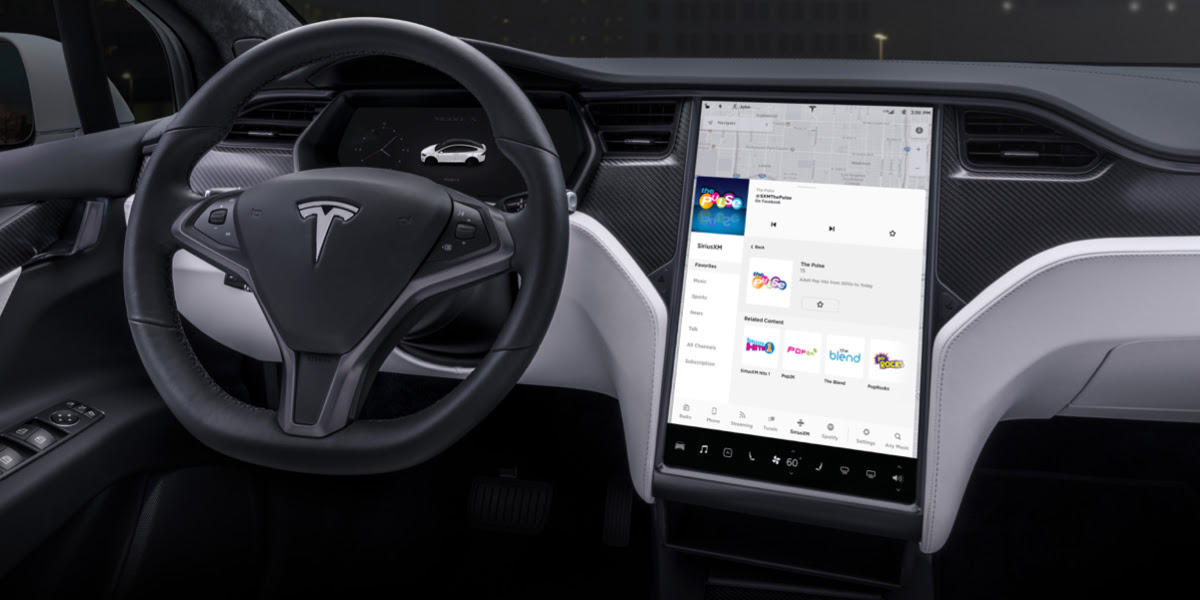
Tesla has rolled out a free three-month trial subscription to Sirius XM, in what appears to be the company’s latest push into making its vehicles’ entertainment systems more feature-rich. The new Sirius XM offer will likely be appreciated by owners of the company’s vehicles, especially considering that the service is among the most popular satellite radios in the country today.
Tesla announced its new offer in an email sent on Monday. An image that accompanied the communication also teased Tesla’s updated and optimized Sirius XM UI for its vehicles. Following is the email’s text.
“Beginning now, enjoy a free, All Access three-month trial subscription to Sirius XM, plus a completely new look and improved functionality. Our latest over-the-air software update includes significant improvements to overall Sirius XM navigation, organization, and search features, including access to more than 150 satellite channels.
“To access simply tap the Sirius XM app from the ‘Music’ section of your in-car center touchscreen—or enjoy your subscription online, on your phone, or at home on connected devices. If you can’t hear SiriusXM channels in your car, select the Sirius XM ‘Subscription’ tab for instruction on how to refresh your audio.”
Tesla has actually been working on Sirius XM improvements for some time now. Back in June, for example, Tesla rolled out its 2020.24.6.4 update, and it included some optimizations to its Model S and Model X’s Sirius XM interface. As noted by noted Tesla owner and hacker @greentheonly, the source code of this update revealed that the Sirius XM optimizations were also intended to be released to other areas such as Canada.
Interestingly enough, Sirius XM is a popular feature that has been exclusive to the Model S and X. Tesla’s most popular vehicle to date, the Model 3, is yet to receive the feature. One could only hope that Sirius XM integration to the Model 3 may eventually be included in the future. Such an update would most definitely be appreciated by the EV community, especially since some Model 3 owners have resorted to using their smartphones or third-party solutions to gain access to the satellite radio service.
The fact that Tesla seems to be pushing Sirius XM rather assertively to its customers seems to suggest that the company may be poised to roll out more entertainment-based apps in the coming months. Apps such as Sirius XM, Spotify, Netflix, and YouTube, may seem quite minor when compared to key functions like Autopilot, after all, but they do help round out the ownership experience of Tesla owners. In a way, Sirius XM does make sense for Tesla’s next-generation of vehicles, especially the Cybertruck and the Semi, both of which would likely be driven in areas that lack LTE connectivity.
